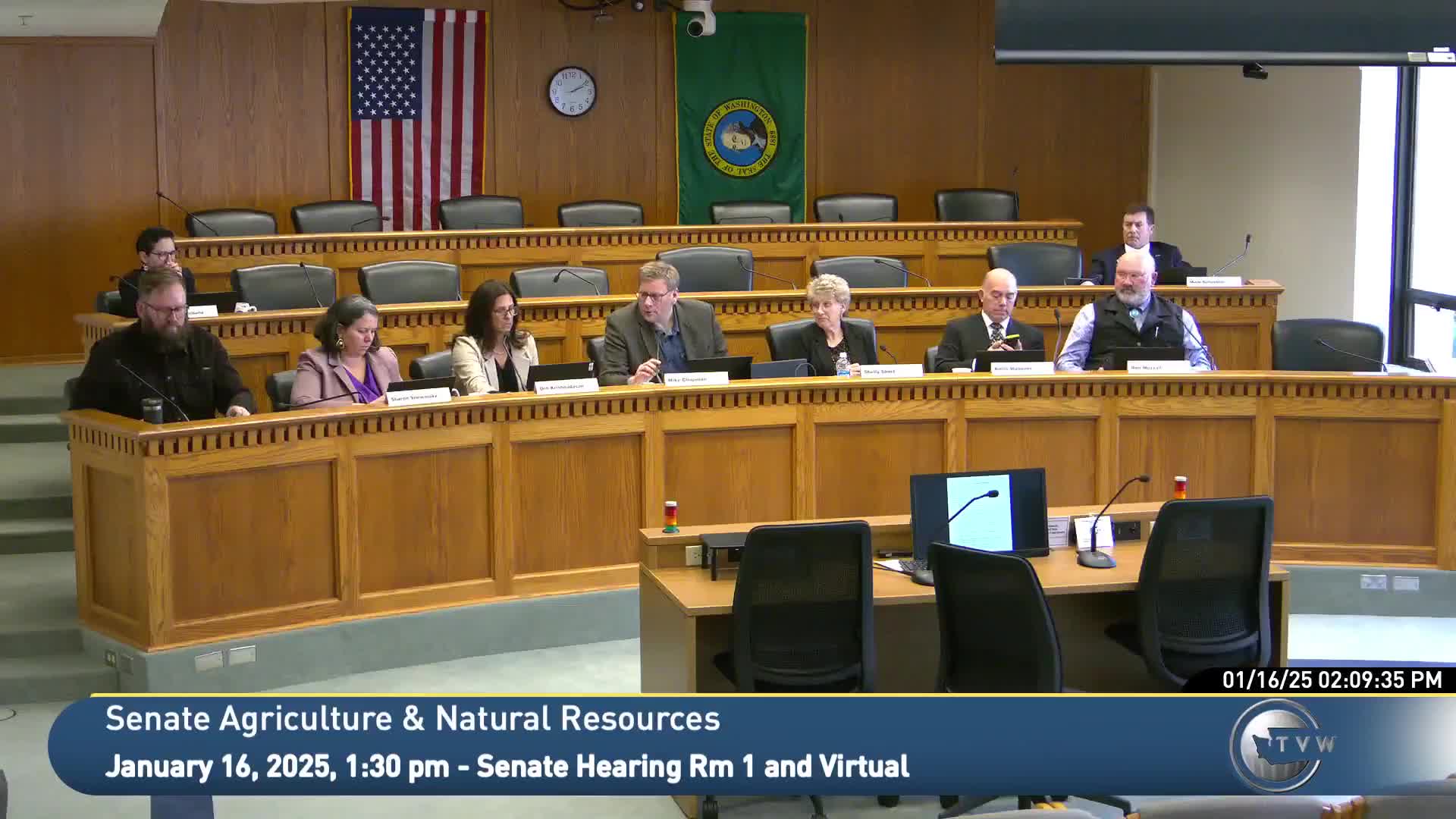Washington Senate hears alarming testimony on farm losses and regulatory burdens
January 16, 2025 | Agriculture, Water, Natural Resources & Parks, Senate, Legislative Sessions, Washington
This article was created by AI summarizing key points discussed. AI makes mistakes, so for full details and context, please refer to the video of the full meeting. Please report any errors so we can fix them. Report an error »

During a recent meeting of the Senate Agriculture & Natural Resources Committee, significant concerns were raised regarding the alarming rate of farm losses in Washington state. Pam Lewison, the Agriculture Research Director for the Washington Policy Center and a fourth-generation farmer, highlighted that the state is losing approximately 14 farms each week. This trend, if continued, could lead to a dramatic reduction in the number of operational farms within just two and a half generations.
Lewison attributed some of these losses to natural attrition, such as retirements and shifts to other careers. However, she emphasized that stringent regulatory requirements and high labor costs are also major contributors to the challenges faced by local farmers. Washington state has some of the highest agricultural wages in the nation and enforces strict workplace regulations, which can lead to financial strain on farms.
The implications of these losses extend beyond just the farmers themselves. Lewison pointed out that a thriving agricultural sector supports a wide range of community members, including farm workers, small businesses, and equipment dealers. The committee members expressed a desire to understand the full impact of these farm closures, including whether production is being lost or simply consolidated under larger operations.
In response to inquiries about agricultural production, it was clarified that the USDA data reflects actual farm closures rather than consolidations. This means that the state is not only losing farms but also significant agricultural production, with approximately 1.5 million acres of farmland lost in recent years.
The meeting concluded with a strong consensus on the importance of supporting local agriculture, with 91 responses in favor of the discussed measures and none against. The committee members acknowledged the need for continued efforts to protect and promote farming in Washington, recognizing the vital role it plays in the community's economy and food supply. As the committee moves forward, the focus will remain on developing policies that bolster the agricultural sector and address the challenges it faces.
Lewison attributed some of these losses to natural attrition, such as retirements and shifts to other careers. However, she emphasized that stringent regulatory requirements and high labor costs are also major contributors to the challenges faced by local farmers. Washington state has some of the highest agricultural wages in the nation and enforces strict workplace regulations, which can lead to financial strain on farms.
The implications of these losses extend beyond just the farmers themselves. Lewison pointed out that a thriving agricultural sector supports a wide range of community members, including farm workers, small businesses, and equipment dealers. The committee members expressed a desire to understand the full impact of these farm closures, including whether production is being lost or simply consolidated under larger operations.
In response to inquiries about agricultural production, it was clarified that the USDA data reflects actual farm closures rather than consolidations. This means that the state is not only losing farms but also significant agricultural production, with approximately 1.5 million acres of farmland lost in recent years.
The meeting concluded with a strong consensus on the importance of supporting local agriculture, with 91 responses in favor of the discussed measures and none against. The committee members acknowledged the need for continued efforts to protect and promote farming in Washington, recognizing the vital role it plays in the community's economy and food supply. As the committee moves forward, the focus will remain on developing policies that bolster the agricultural sector and address the challenges it faces.
View full meeting
This article is based on a recent meeting—watch the full video and explore the complete transcript for deeper insights into the discussion.
View full meeting
